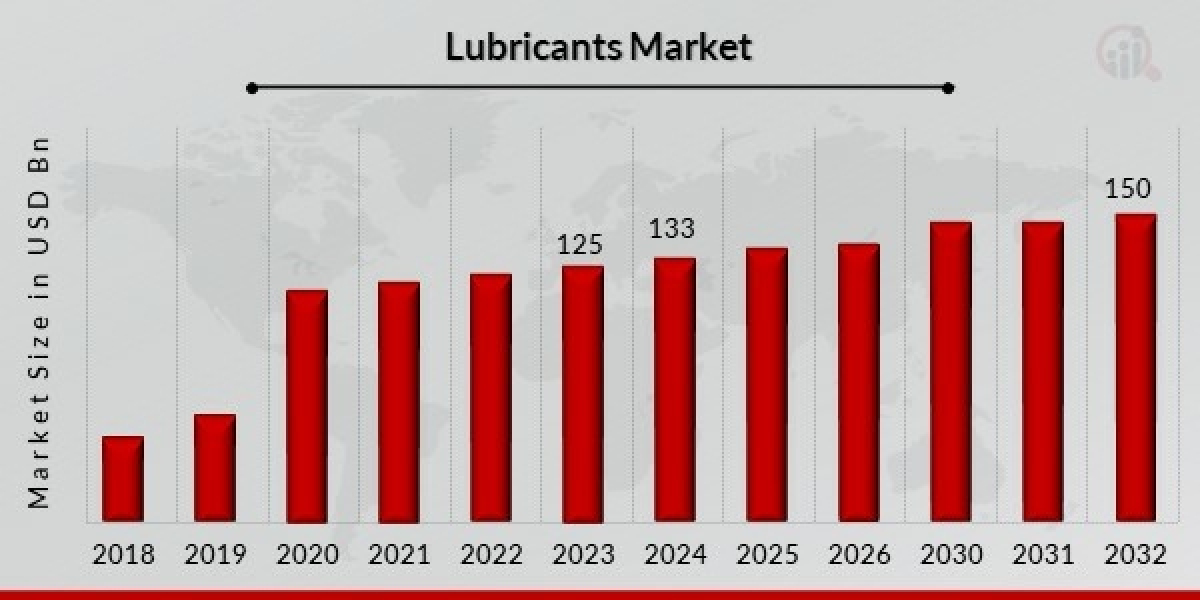The lubricants market plays a crucial role in supporting global industrial growth, automotive operations, and machinery maintenance. Lubricants are essential substances used to reduce friction between surfaces in mutual contact, ultimately reducing heat generation, wear, and energy consumption. The market has witnessed consistent growth over the decades due to expanding automotive production, rising industrialisation, and technological advancements in lubricant formulation.
The demand for lubricants is largely driven by the automotive sector, which accounts for a significant portion of total consumption globally. Engine oils, transmission fluids, gear oils, and greases are the primary segments within automotive lubricants. As vehicle ownership rises, especially in emerging economies, lubricant consumption increases proportionally to ensure smooth engine performance, protect components, and enhance fuel efficiency. Additionally, as people become aware of preventive maintenance for vehicle longevity, periodic oil changes are becoming common practice, further driving the market.
Industrial lubricants form another large segment, supporting the operation of heavy machinery, turbines, hydraulic systems, and industrial gearboxes. Manufacturing units, power generation facilities, mining equipment, and construction machinery rely heavily on lubricants for optimal performance and reduced downtime. Hydraulic fluids, compressor oils, metalworking fluids, and process oils ensure equipment longevity and consistent production efficiency. The rise of infrastructure development and rapid urbanisation globally is indirectly supporting lubricant demand as heavy-duty equipment usage increases.
In recent years, there has been an observable shift towards synthetic and semi-synthetic lubricants over conventional mineral-based oils. Synthetic lubricants offer enhanced performance, higher thermal stability, and longer oil drain intervals, thereby reducing maintenance frequency and operational costs. This shift is particularly prominent in developed markets, where industries and consumers are ready to invest in premium products for improved efficiency. However, mineral-based lubricants continue to dominate in emerging economies due to their affordability and wide availability.
Environmental regulations are shaping the future of the lubricants market. Governments and environmental bodies worldwide are focusing on minimising hazardous emissions and reducing pollution levels. This has led to the development of bio-based lubricants, which are biodegradable and non-toxic, providing an eco-friendly alternative to conventional oils. Bio-based lubricants, derived from vegetable oils and animal fats, are gaining traction in sensitive applications such as marine, agriculture, and forestry. While their market share remains small compared to mineral and synthetic oils, their adoption is expected to grow steadily in the coming years as sustainability trends strengthen.
The lubricants market is also witnessing technological advancements in additive formulations. Additives enhance lubricant properties such as anti-wear, anti-oxidation, corrosion resistance, and viscosity control. Continuous research in additive technology is leading to the development of high-performance lubricants capable of performing in extreme temperatures and heavy-load conditions. This is especially vital in aviation, marine, and mining industries where equipment operates under harsh environments and demands superior lubrication to prevent unexpected breakdowns.
Asia-Pacific remains the largest market for lubricants, driven by countries like China, India, and Japan. The region's robust industrial growth, increasing vehicle ownership, expanding transportation sector, and continuous infrastructure development are the major factors behind its dominance. China holds a substantial market share due to its extensive manufacturing sector and strong automotive industry. India is witnessing rapid growth in lubricant consumption as a result of rising disposable income, vehicle sales, and the expansion of highways and roads.
North America and Europe represent mature markets for lubricants, with steady demand from automotive and industrial sectors. However, environmental regulations in these regions are stricter, driving the adoption of low-emission, high-performance synthetic and bio-based lubricants. European nations are increasingly shifting towards environmentally friendly products due to sustainability goals and consumer preference for greener alternatives.
The Middle East and Africa are emerging as promising regions for the lubricants market. The strong presence of oil and gas industries in the Middle East drives demand for industrial lubricants, while infrastructure development projects in African countries increase the use of heavy machinery, fuelling lubricant consumption. South America, led by Brazil, is witnessing moderate growth in this market, driven by its automotive industry and agricultural equipment demand.
Distribution channels in the lubricants market include direct sales, distributors, retailers, and online platforms. Direct sales to industries and automotive service stations remain a major channel, ensuring large volume sales and long-term contracts. However, online platforms are gaining popularity for retail lubricant sales due to the convenience and availability of multiple brands with detailed specifications for consumer comparison.
Competitive dynamics in the lubricants market are intense, with global oil giants and specialised lubricant manufacturers competing for market share. Companies are focusing on expanding their production capacities, investing in R&D for innovative formulations, and strengthening distribution networks to penetrate emerging markets. Branding, product differentiation, and price competitiveness remain key strategies to sustain growth.














